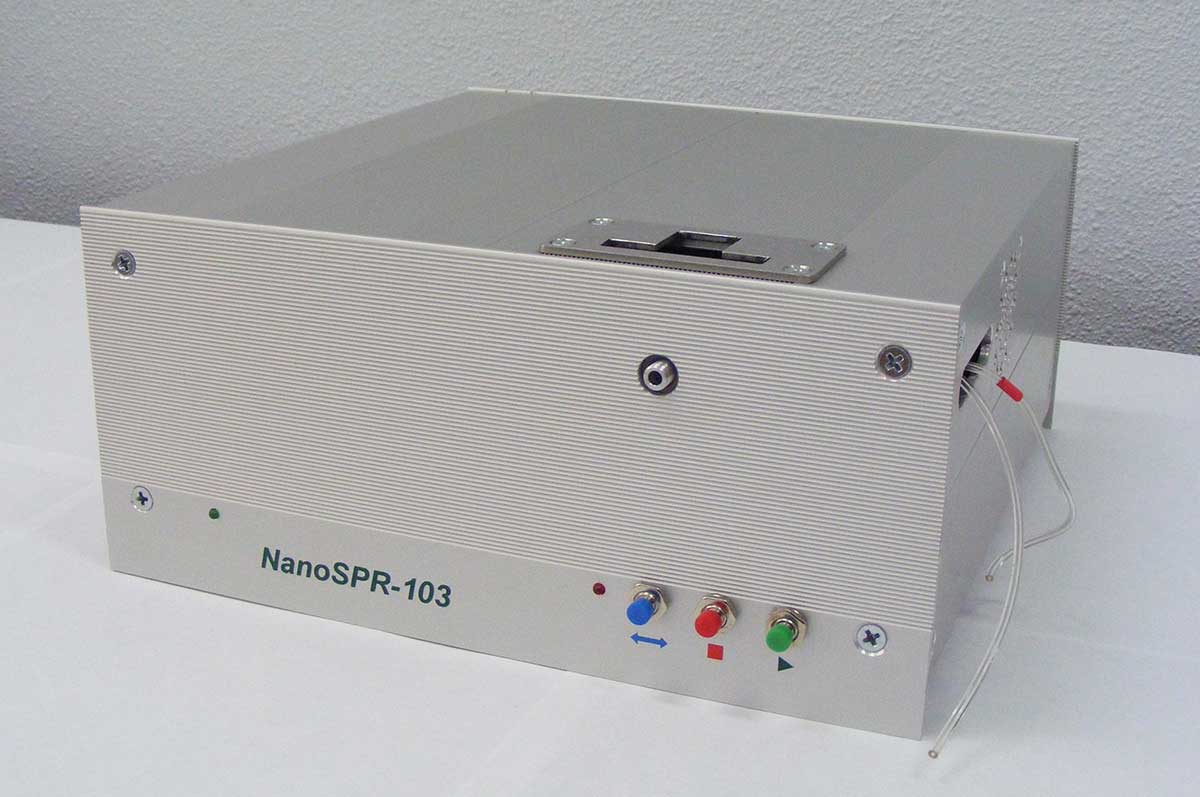NanoSPR103 – Localized surface plasmon resonance spectrometer
-
Realization of real-time biokinetic, immunosensing and biosensing techniques
-
Investigation of nanosized objects like nanoparticles or nanotubes
-
Studies of adsorption and electrochemical reactions
-
Thin organic and inorganic film characterization and refractive index measurements
-
Gas and liquid composition detection and chemosensor applications
-
Spectral enhancement and registration of molecular resonances
Description
Catalog number
Price
NanoSPR103 – Localized surface plasmon resonance spectrometer
SPR103
Description
Catalog number
Price
NanoSPR103R – Localized surface plasmon resonance reader (requires an external spectrometer)
SPR103R
System Specifications
The NanoSPR103 is a computer-controlled compact LSPR spectrometer that implements the measurements of noble metal nanoparticles extinction. A nanosized structures of gold or silver are deposited in disposable plastic cuvette or, using wide range of methods, onto a glass slide which is brought into optical contact with compact spectrometer using waveguide. These nanostructures form the sensitive sensor surface where localized surface plasmons are excited using polarized or unpolarized light emitted by a source of visible-infrared light (l = 400-900 nm). The light is transmitted through the nanostructures, where it can couple to the surface mode and yield localized surface plasmons. Excitation of localized plasmons is evidenced by a resonant maximum in the extinction spectrum. The wavelength dependence of this extinction intensity (the LSPR spectrum) reflects variation of the LSPR coupling level and represents the sensor output. Its shape, especially position of the resonant peak, allows the refractive index and the thickness of the layer coated upon the gold or silver nanostructures to be elucidated.
Biosensor applications of LSPR spectrometer rely upon high selectivity of biomolecular interactions. In typical biosensor, the biosystem sample is placed onto derivatized (usually with alkyl thiols) gold or silver nanostructures using appropriate immobilization techniques (covalent, His or affinity tag, antibodies). Selective coupling of the analyte species present in the probe to the immobilized biosystem affects the effective refractive index in the vicinity of the surface of nanostructures resulting in a spectral dependence shift. An advantage of LSPR method in comparison with other biochemical methods is the possibility for tuning of wavelength LSP resonance position depend on polarization of light and geometry of nanostructures. The unique peculiarity of NanoSPR103 device is a possibility to measure the different type of plasmonic nanostructure assembles in the process of their manufacturing due to specialized design of sample holders. NanoSPR103 can be used with nanochips (microscope slide or cover slip format) or with disposable plastic cuvette. System of analyte delivery and design of optic allow real time measurements both in air and liquid environment.
Depending on the modification, this device has built-in compact spectrometer or it can work with any external spectrometers. Modification of the instrument allows to utilize it for electrochemical applications.


